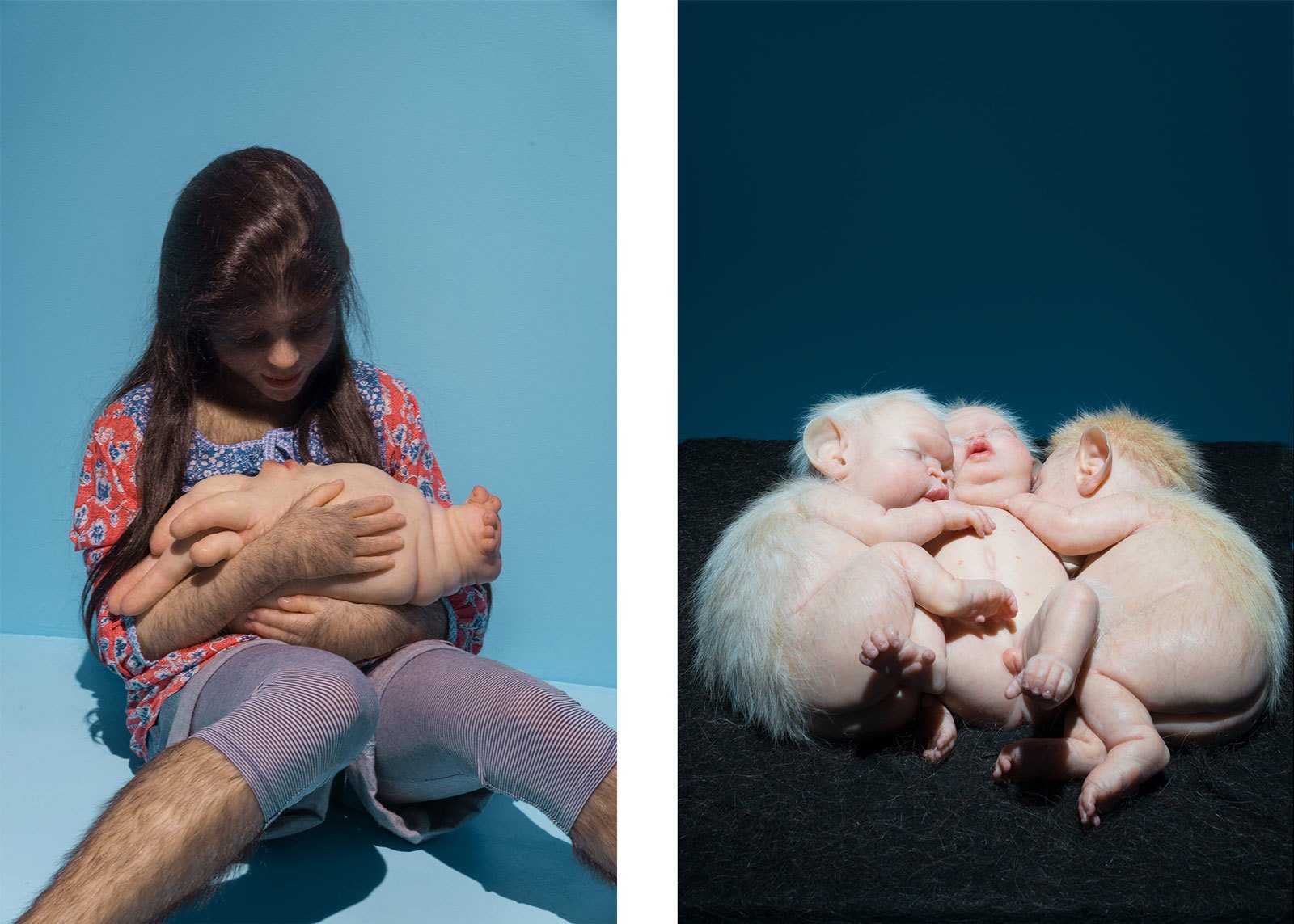Patricia Piccinini
b. 1965, Freetown, Sierra Leone. Lives and works in Melbourne

The Comforter, 2010
Silicone, fiberglass, steel, fox fur, human hair, clothing,
60 × 80 × 80cm
Olbricht Collection
Litter, 2010
Silicone, fiberglass, human and animal hair. Sculpture 16 × 46 × 41 cm, pillow 63 × 59 cm
Olbricht Collection
In the list of materials used in the works of artist Patricia Piccinini it would seem natural to see, alongside the animal and human hair, a mixed array of various DNA and genes. The hyperrealism and biomimetic qualities of the creatures the artist creates transcend our tendency toward simplification and easy labels, as they fundamentally challenge what being human means. The hairy teenage girl, tenderly named The Comforter, could well be suffering from a condition called hypertrichosis, which is believed to be a genetic disorder or the result of a mutation. Her only preoccupation, however, seems to be comforting the newborn she is holding, her head lovingly tilted toward the amorphous being which is, in fact, a pharm animal. In Litter, three orphaned baby creatures cuddle together to sleep, too fragile to care about what or who they are.
Although we seem to know a lot about genetic engineering, interspecies breeding, and so on, when presented with the physicality of what this “otherness” looks like we face the inevitable question of whether society is ready to take an evolutionary leap toward that level of tolerance and interconnectedness. In this sense, Piccinini’s new species seem to be cautious: their inertness and inanimate nature could well be a state of nervousness in the face of a possible future encounter.